Airspace from ground level to 400 feet is about to get really crowded. Keep alert, fellow pilots! Am I overstating this situation? I don’t think so.

Throughout Covid, a group has been working on potential changes to FAA regulations to allow drones to fly further, beyond visual line of sight (as military drones do now). It’s abbreviated BVLOS.
It is impossible to keep up with all the regulatory actions from dozens of agencies. Some of this stuff is dry as old bones. The document I’m focused on runs to 381 pages. If you’re a real glutton for punishment, read the whole thing.
The good news = This is only an industry committee report. It is not regulation. It may never be regulation. However…
The bad news = The FAA is working on regulations to integrate drones and this could influence that work. Absent any resistance, too many such plans tend to sail through the governmental apparatus.
Back to good news = This is a document to which we can respond.
What Is the Danger?
Drones, robot aircraft flying out of visual range of human operators, are coming. Can these flying machines see and avoid us in our crewed aircraft? Did you know you were “crew?” No more can some say “manned” aircraft. When you fly your Part 103 vehicle, you are “crew.”
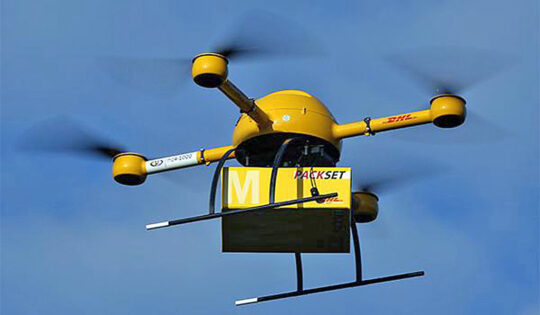
The trouble is, such a lengthy report by an Aviation Rulemaking Committee, or ARC, will get the attention of FAA rule writers. The agency asked for a report. They got one. They have to read it. It might get enacted, as is… unless —!
Other groups have already given thoughtful responses but you should consider this an early warm-up for your letter writing later this year. I refer to the coming NPRM for MOSAIC — get ready to write your comments by fall 2022 — but here is another pre-regulatory action that demands our attention.
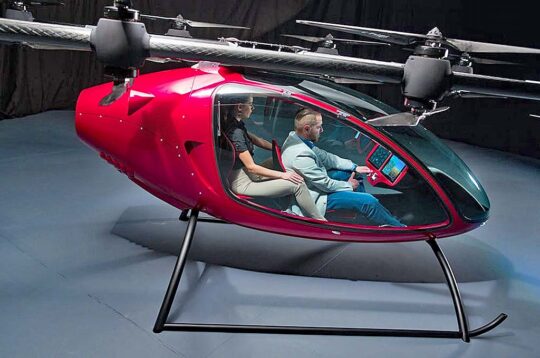
Some eVTOLs are piloted but essentially computer-directed, making them semi-autonomous. All those motors and spinning props pack considerable energy.
Another problem: This BVLOS report was not universally agreed to by those involved with its creation, in fact, the report states, “there was not a unanimity of views.” Some committee members sent letters of “non-concurrence.” That’s good!
The report noted, “ARC recommends that the FAA set an acceptable level of risk.” That sounds ominous. “Acceptable risk” for an an uncrewed robot aircraft is a lot different than for an aircraft with humans in it.
The ARC group wrote that it, “recommends modifications to the right of way rules in [certain areas].” They listed what they believe is needed by unmanned aircraft (UA):
- give UA right of way in Shielded Areas;
- give UA right of way over crewed aircraft that are not equipped with ADS-B or TABS in Non-Shielded Low Altitude Areas; and
- give crewed aircraft that are equipped with ADS-B or TABS (and broadcasting their position) right of way in Non-Shielded Low Altitude Areas.
Read that second one again! That language certainly suggests you need to stay out of their way. They can avoid you if you have ADS-B or TABS equipment on board but if you lack that equipment, look out!
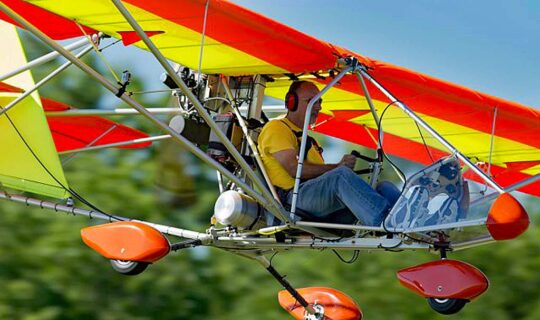
Ultralights are often flown at lower altitudes …because that’s where they can be a lot of fun. photo by David Jacobson
Here’s a general tone in the report, “For operations under 400 feet in uncontrolled airspace, UAs will be operating alongside other UAs, eVTOL aircraft, and potentially others.” Potentially others?! Do they mean we LSA or ultralight pilots enjoying our scenic flying in uncontrolled airspace, possibly at lower altitudes? I don’t know their thinking but it sounds like recreational aircraft are merely an afterthought… or perhaps they were given no thought whatsoever.
If you think all this relates only to the sort of drones you can buy on Amazon, you miss the bigger picture the ARC envisions. They wrote that their ideas are, “applicable to aircraft up to 800,000 foot-pounds of kinetic energy,” which they later describe as “representative of a Light-Sport Aircraft.”
So, unmanned or “robot aircraft” as large or larger than what you are flying could be in the air with you and it may be your job to either stay out of their way or equip your aircraft with equipment UAs can use to avoid striking you.
Friends in High Places
Thankfully, our friends over at AOPA were fully on top of this. As one of the 89 members of ARC, they know all about BVLOS. Even better, they already submitted a letter of “noncurrence.” The AOPA letter lead a joint response signed by several big organizations including Aerospace Industries Association; Aircraft Owners and Pilots Association; Air Line Pilots Association; General Aviation Manufacturers Association; Helicopter Association International; and, Praxis Aerospace Concepts.
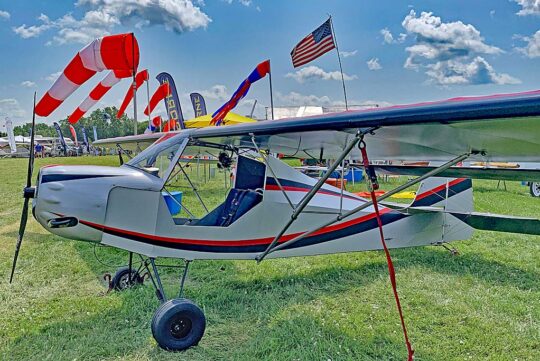
Aircraft like Badland’s F-series Part 103 models are usually flown away from areas likely to served by drones, but conflicts could arise.
Here is a key opening phrase from the official reply forwarded by Chris Cooper, AOPA’s Senior Director of Regulatory Affairs, “BVLOS ARC leadership effectively proposes that drones operating under BVLOS rules would have 1) complete right-of-way over all crewed aircraft not equipped with either ADS-B or TABS, and 2) right-of-way over all crewed aircraft that are operating in what is being proposed as ‘shielded areas’.”
ARC members apparently believe that “Unmanned Aircraft (UA) are operated at very low altitudes and in volumes of airspace that do not have significant numbers of general aviation operations.” While recreational aircraft operators usually stay away from flight over major metro areas and GA aircraft may often cruise at higher altitudes, the fact remains that smaller, light aircraft enjoy lower altitude flying. Of course, operating at lower altitudes happens at each end of every flight.
As one worried USUA board member put it, “[ARC’s recommendation is] like saying you go to the park for a walk and are confronted by a robot coming at you with spinning knives, perhaps from behind you.” The BVLOS document suggests it is your duty to get out of the robot’s way, or have equipment that announces you to them.
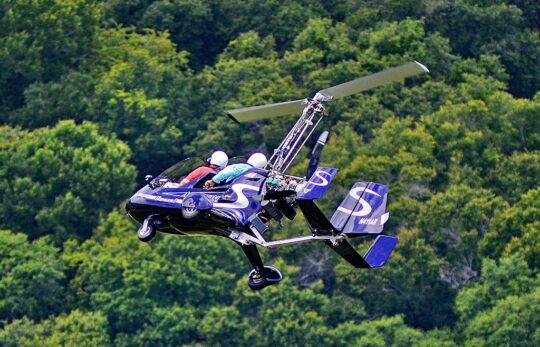
Gryoplanes, “nothing like multicopters,” say enthusiasts, are highly maneuverable but cannot suddenly yield right-of-way to unmanned aircraft.
I don’t know about you but that sounds to me like, “Guilty until proven innocent.” What existing pilot would accept that?
Perhaps that was not the intent of the contributors to the almost-400-page report. However, looking at the list of participants, I see almost none that are concerned with the recreational aircraft community. Most participating companies have zero connection to and probably lack interest in recreational aircraft pilots and many of these organization seem unfamiliar with general, recreational, or sport aviation.
Indeed, some aviation community groups that did participate in the ARC expressed grave concerns.
Their nonconcurrence letter states, “AOPA has considerable concerns about certain recommendations that will reduce the safety of airspace users.” One of AOPA’s recommendations: “should be … removed and replaced … [with] language that requires equal responsibility of uncrewed aircraft to see (detect) and avoid other aircraft.” Later AOPA added, “The belief that traditional aircraft only operate at altitudes above 500 feet is a common misconception among drone pilots.”
AOPA’s conclusion on that point, “AOPA recommends maintaining right-of-way rules based on maneuverability, with no blanket right-of-way rules for BVLOS drones over crewed aircraft without ADS-B or TABS equipment.”
On the Job!
Some deeply-affected organizations are disturbed by several of ARC’s broad recommendations. I repeat my statement that it is challenging to keep up with multiple groups writing potential rules. However, EAA’s Sean Elliott recently had discussions with U.S. Ultralight Association leader Roy Beisswenger and said EAA is working on a response. LAMA will add its voice to this chorus.
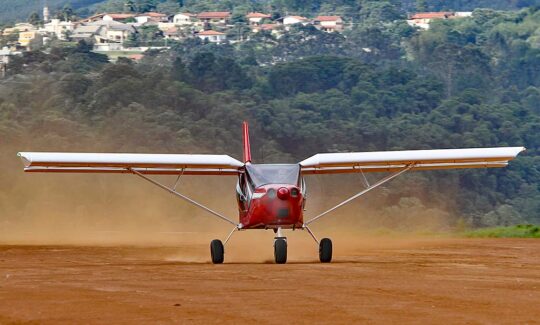
Some light aircraft are built for unimproved airstrips but low flying drones could present quite a hazard.
I repeat, the concerns I am relating here are not regulations (not yet, anyway). They are only the suggestions of an ARC devising plans for drones operated beyond visual line of sight, or BVLOS. It may sound troubling today, but recreational aviation has time to respond.
The letter penned by the big organizations concluded, “These radical recommendations proposing to change the fundamental responsibility of avoiding other aircraft, and right-of-way rules based on maneuverability, fails to recognize the reality of aircraft operations at lower altitudes, and the unsafe and unfeasible requirements it will place on crewed aircraft.”
Uh, folks… that group using “lower altitudes” is us… that is, you!
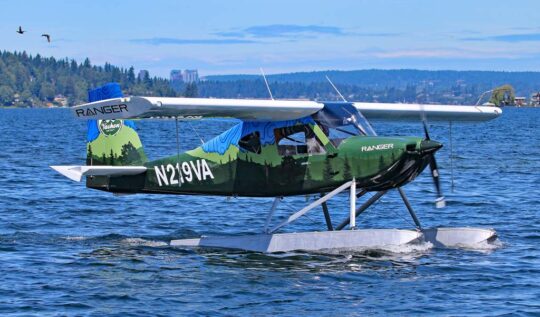
Float-equipped aircraft or amphibians often operate at zero to 400 feet above the surface. It’s part of the magic of that kind of aviation.
All that said, most pilots I speak to are not anti-drone. New technologies are always disruptive but we can come to agreement if we communicate. For the most part, drones and recreating pilots don’t want to fly in the same spaces. In areas of potential conflict, it will be important to continue the dialogue.
I urge you to keep supporting the leadership organizations you presently support and to be prepared to comment when proposed regulations are announced.
A public meeting will be held on June 22, 2022 regarding the ARC report discussed above. Those who may wish to attend must act quickly and request to be added. If you want to learn more, see this AOPA article.
Thanks to LAMA Board Director Roy Beisswenger for assistance in preparing this article as well as to AOPA’s Chris Cooper. —DJ


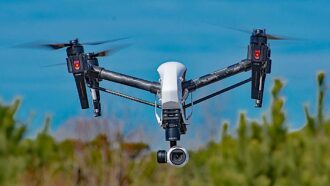
The delivery drones are coming. This is inevitable due to big business and economics. Either we regulate the drone industry, or the drone industry will regulate us. We need to be proactive in formulating regulations NOW to protect our lives while flying. Delivery drones need to stay at 150’ above ground level , only follow existing roads and use lanes above the roads equal to vehicular traffic. Drones need to have colisión avoidance technology to avoid in air accidents . Drones need to 100% ovoid all air fields .
Hobby RC craft and drones need in addition to line of sight Regs, an altitude limiting device.
Dan;
It is great having you on top of this. Ultralights, LSAs, helicopters and just as important are medevac and other emergency services along with military that are below 400 feet AGL in uncontrolled airspace.
Five years ago I attend a UAV delivery concept meeting and was totally shocked by the lack of aviation expertise. After attending the morning session which covered future UAV delivery concepts (over populated areas), the leader ask for comments. I spent my lunch break writing out comments which included things the presented concepts hadn’t even thought of:
1. The UAVs must be networked to avoid UAV – UAV collisions.
2. The UAV network must be tied into and coordinated with the FAA traffic control network.
3. The FAA will have to expand its area/altitudes of positive control to support medevac and other emergency service (crewed operation).
4. The UAV network must be available to all crewed air vehicles to monitor (this includes ADS-B and non-ADSB equipped aircraft (this will require a free or low-cost solution for manned air vehicles without electrical systems).
5. The national and international airspace definitions will require coordinated agreement of changes so that there is one international set of UAV airspace operational rules.
6. Standard UAV emergency logic for handling inflight failures along with min-imp systems, weather and aerodynamic capability (UAVs have to ground themselves, divert, etc just like a crewed air vehicles must).
7. ETC
At the end of the day, the leader’s reply to my inputs was that I was thinking to many years in the future. Needless to say, I reported back to my employer that there was no need to be involved in the group’s effort as their concepts are decades away from getting to the level where the UAV delivery concepts will be integrated into the airspace structures.
As you stated, this document is a starting point and the ARC group is going to get a big shock at the response of the global aviation community.
Respectfully;
Tim
PS: Keep up the great work.
I am going to have to read the report. How can a report that recommends a change in regulation not have cons included in the recommendation resulting in the submission of non-concurrence letters? I have had an interest in aviation since I was a child. This has lead me to drone flying. I don’t have a license under part 107, but there are still rules that I must follow. When I look at my screen and then back to the drone it takes some time to see it because it is sub 250gm. The lift potential of drones is increasing. Smaller drones are lifting heavier loads. Why is the burden shifted shifted to a pilot with the expectation he will be able to see a small drone to avoid it? Apparently a piloted drone will still be responsible to avoid aircraft when a robotic drone won’t. It’s an undue burden placed on an aircraft pilot.
For robot, read drone!
Three Laws of Robotics :
First Law.
A robot may not injure a human being or, through inaction, allow a human being to come to harm.
Second Law.
A robot must obey the orders given it by human beings except where such orders would conflict with the First Law.
Third Law.
A robot must protect its own existence as long as such protection does not conflict with the First or Second Law.
Just the thought that drones have right of way over crew is frightening!